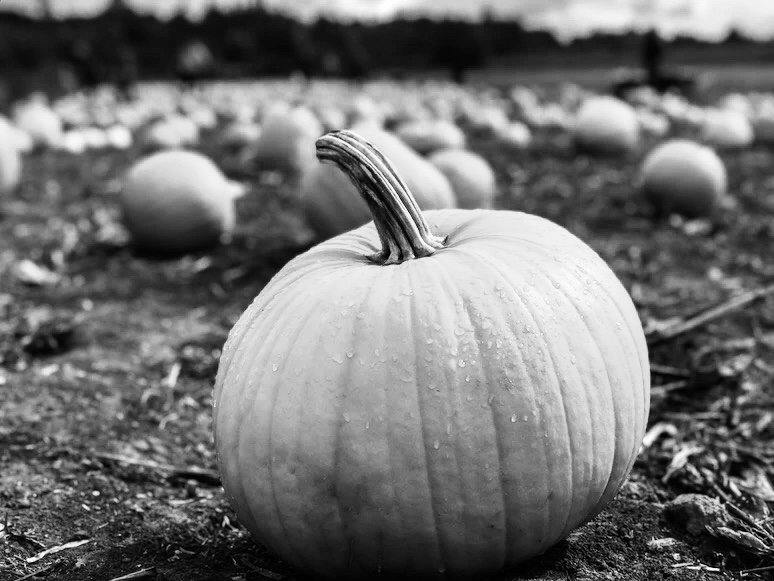
AUTUMN
Many folks consider fall their favorite season. The cooler evenings are welcome after a blistering hot summer like we had this year. The changing tree colors we enjoy in the northeast are famous worldwide and my reason is the end of mosquito season.
Now that autumn is officially here many people will begin the annual ritual of decorating their homes with Indian corn and pumpkins. For gardeners fall is the second planting season. Shrubs, trees and spring flowering bulbs are planted now. Perennials can also be divided now and most have an advantage in the spring when root growth gets an early start. Check your plants requirements before digging them up.
Autumnal leaves in vibrant hues are a beautiful part of the season, but those leaves are also a vital part of keeping trees alive.
Trees that have leaves that change color in fall are deciduous. (Evergreens are trees with needles, which stay green to continue the photosynthesis process through the winter, are coniferous.) Deciduous trees usually have large, broad leaves.
Most of the year, these leaves are green because of the chlorophyll they use to absorb energy from sunlight during photosynthesis. The leaves convert the energy into sugars to feed the tree.
As the season changes, temperatures drop and days get shorter. Trees get less direct sunlight, and the chlorophyll in the leaves breaks down.
The lack of chlorophyll reveals yellow and orange pigments that were already in the leaves but masked during the warmer months. Darker red leaves are the result of a chemical change: Sugars that can get trapped in the leaves produce new pigments (called anthocyanins) that weren’t part of the leaf in the growing season. Some trees, like oaks and dogwoods, are likely to produce red leaves.
How much and how fast leaves transform varies by location on the globe. The best colors are produced when the weather is dry, sunny and cool. Places that are cloudy, damp or warm won’t see the same degree of changing color.
Then, of course, the leaves fall. Trees start building a protective seal between leaves and their branches as the weather turns. They take in as many nutrients as possible from the leaves, but leaves wouldn’t survive the winter and would make trees vulnerable to damage if they remained. When the leaves are cut off from the fluid in the branches, they separate and drop to the ground.
As the leaves decay on the forest floor, they release nutrients into soil which will feed the trees and micro-organisms in the following spring.
One of the best things we can do for our garden soil is add chopped oak leaves in the fall and allow it to decompose. Your earthworms will do the rest.
RESEEDING LAWNS
No matter how beautiful your lawn is it will greatly benefit from reseeding. All plants including grass have a certain life span. As the older grass dies away it leaves spots where weeds can take hold next spring. The best way to avoid that is with think lush growth. Since we cut our lawns often, they are not able to reseed themselves.
September and early October is the perfect time to reseed your lawn. As the summer heat fades weeds and wildflowers begin to wane, dying back in the fields and on our lawns. This will give your grass seed plenty of space to germinate and grow without competition for sunlight, water and nutrients. The cooler weather and increased rain and even the morning dew will keep your seedlings moist until they become established.
Grass seeds do like to be kept moist so a light water when it is dry will be appreciated. Lawns do best with one inch of water a week. More that is harmful rather than helpful, producing weak root systems and encouraging fungus and diseases.
September seeding will also give your young grass a few weeks to sprout before the leaves fall, blocking the greatly needed sunlight.
In order for the seed to germinate it must make contact with the soil for the roots to take hold. Thatching, raking and aerating will greatly improve your success level.
There is far too much information to give in this one article, from how and when to thatch to seed selection.
Luckily for us Rutgers Cooperative Extension of Union County will supply this information free of cost.
The Helpline office also sells Soil Test Kits. This $20 kit will give you valuable information on your soil and how to improve it.
You can call the Garden Helpline at 908-654-9852, or write to them atMastergardeners@ucnj.org
DEER RUTTING OR MATING SEASON
Deer rutting season begins in October and last until December. During these months bucks round up their females into herds. While scurrying around deer run without caution, darting in front of vehicles without a moment’s notice. Therefore, more deer are hit by cars now than any other time of year. Please keep your eyes on the road and drive with extra caution, especially at night.
Happy Autumn,
James

